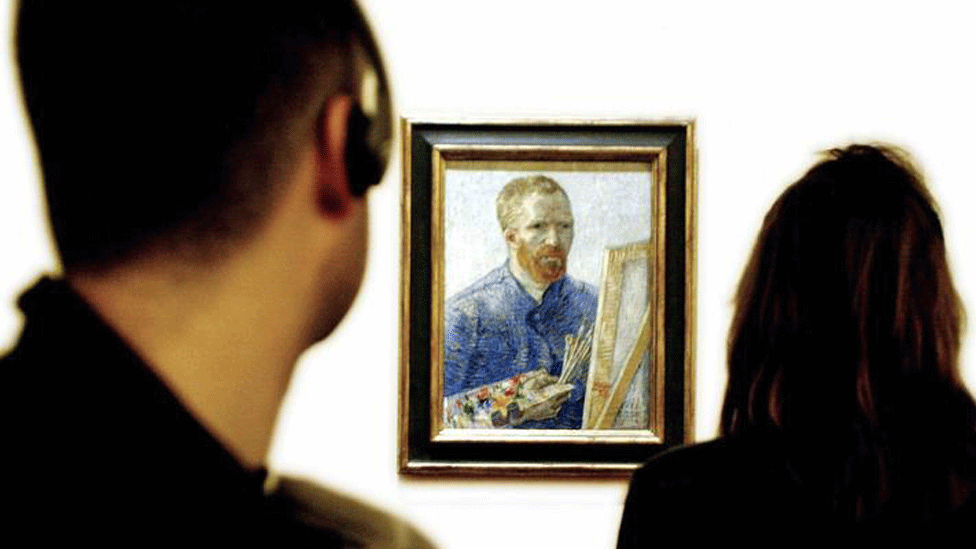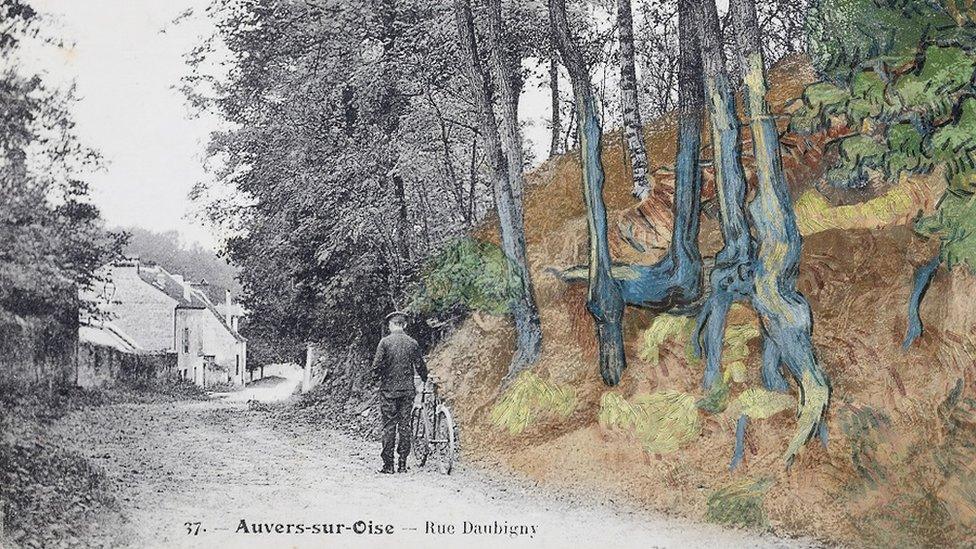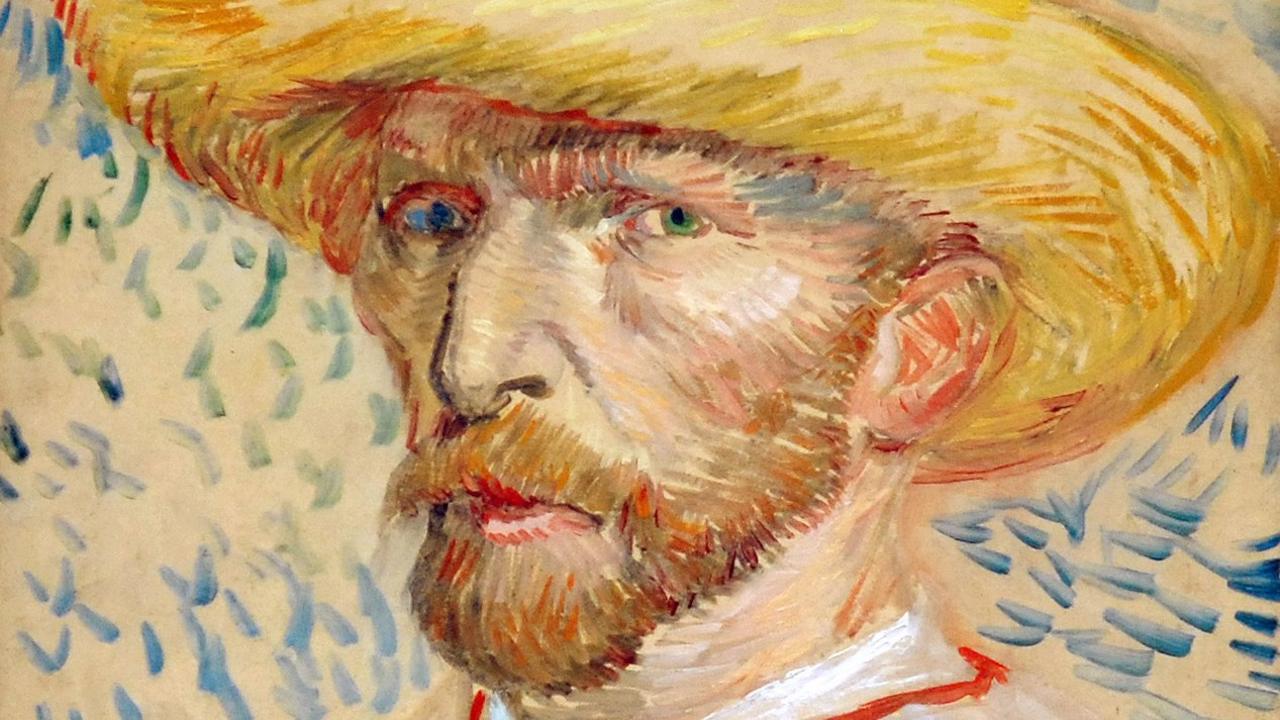Van Gogh: Artist experienced 'delirium from alcohol withdrawal'
- Published
Driving into the art of Vincent Van Gogh
The artist Vincent van Gogh is likely to have experienced two episodes of delirium caused by alcohol withdrawal, new research has shown.
The post-Impressionist painter, known for works such as Sunflowers and The Starry Night, famously sliced off his left ear during an argument.
Van Gogh dismissed the episode as "a simple artist's bout of craziness" and later a "mental or nervous fever".
But research in the Netherlands has thrown new light on his mental state.
Experts at the University Medical Centre Groningen conducted a psychiatric examination based on hundreds of letters he wrote - the majority to his beloved brother, Theo - as well as existing medical records.
They found that the artist probably experienced two episodes of delirium caused by alcohol withdrawal after he cut off his own ear.
But, as the patient in this case could not be interviewed, the researchers emphasised that their conclusions must be treated with caution.
Van Gogh is thought to have suffered from a combination of psychiatric disorders, most likely bipolar and borderline personality, but his suspected illnesses have never been diagnosed.
According to this new research, it is unlikely that the Dutch painter had schizophrenia.

Van Gogh took his own life in 1890, two years after cutting off his ear
As to whether he suffered from epilepsy, a diagnosis established by his own doctors, the researchers believe it was most likely "masked epilepsy".
This means the patient does not have classic seizures, but rather a behavioural disorder based on epileptic activity in the deeper parts of the brain. The resulting seizures can trigger anxiety, delusions and hallucinations.
In Van Gogh's case, the epileptic activity could have been caused by brain damage as a result of his lifestyle. Alcohol abuse, malnutrition, poor sleep and mental exhaustion could all have been factors, researchers say.
Since additional examinations - in particular brain scans and imaging techniques - were not available in his day, it is difficult to establish these findings beyond reasonable doubt.
The new findings from the Dutch researchers have been published in the International Journal of Bipolar Disorders.
But Professor of Psychiatry Willem Nolen, who co-ordinated the research, cautioned that Van Gogh might have "downplayed or even embellished certain things" in his letters.
"Although [they] contain a lot of information, we must remember that he didn't write them to his doctors, but to... family members and other relatives in order to inform them, to reassure them or to get something done," he said.
"Therefore, our article certainly won't be the last on Van Gogh's illnesses."
WATCH: Is this a newly discovered Van Gogh?
Van Gogh's creativity is sometimes attributed to his mental health issues, but art experts argue that his achievements were rooted in the skills of his craft, which he worked hard to develop over many years.
In fact, he rarely worked during periods of psychosis.
Despite his inner turmoil, Van Gogh was deeply motivated to continue painting and he described "profound friendships" as his only remedy.
He died on 29 July 1890, just two days after he tried to take his own life.
- Published30 March 2020

- Published28 July 2020

- Published12 July 2016
